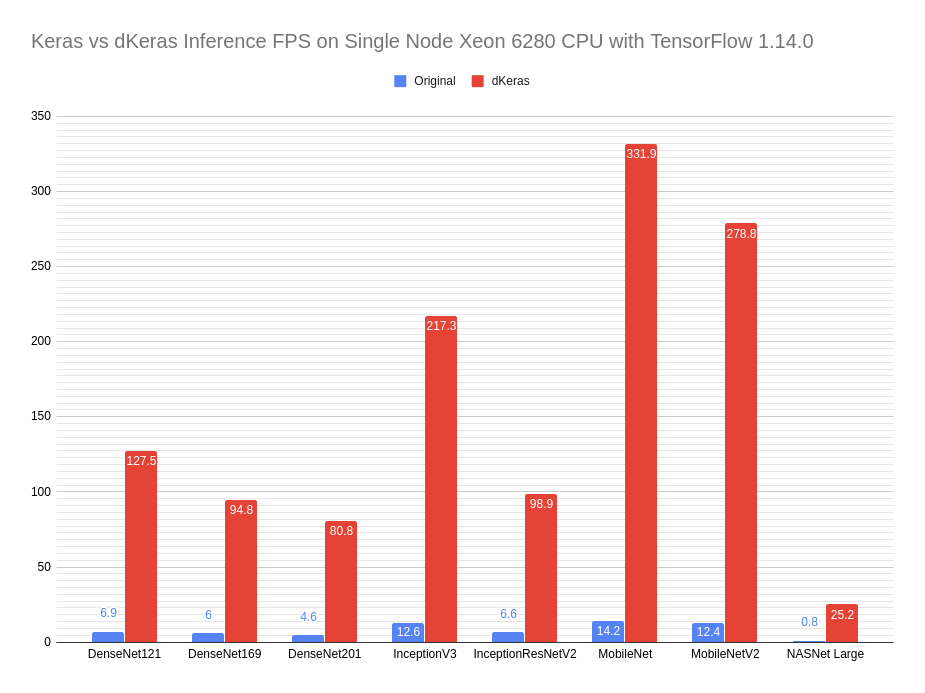https://github.com/dkeras-project/dkeras
Distributed Keras Engine, Make Keras faster with only one line of code.
https://github.com/dkeras-project/dkeras
data-parallelism deep-learning deep-neural-networks distributed distributed-deep-learning distributed-keras-engine distributed-systems keras keras-classification-models keras-models keras-neural-networks keras-tensorflow machine-learning neural-network parallel-computing plaidml python ray tensorflow tensorflow-models
Last synced: 7 months ago
JSON representation
Distributed Keras Engine, Make Keras faster with only one line of code.
- Host: GitHub
- URL: https://github.com/dkeras-project/dkeras
- Owner: dkeras-project
- License: mit
- Created: 2019-07-09T18:43:41.000Z (over 6 years ago)
- Default Branch: master
- Last Pushed: 2019-10-03T17:50:59.000Z (about 6 years ago)
- Last Synced: 2025-04-07T01:52:23.672Z (8 months ago)
- Topics: data-parallelism, deep-learning, deep-neural-networks, distributed, distributed-deep-learning, distributed-keras-engine, distributed-systems, keras, keras-classification-models, keras-models, keras-neural-networks, keras-tensorflow, machine-learning, neural-network, parallel-computing, plaidml, python, ray, tensorflow, tensorflow-models
- Language: Python
- Homepage:
- Size: 6.48 MB
- Stars: 189
- Watchers: 7
- Forks: 12
- Open Issues: 3
-
Metadata Files:
- Readme: README.md
- License: LICENSE
Awesome Lists containing this project
README

# dKeras: Distributed Keras Engine
### ***Make Keras faster with only one line of code.***
dKeras is a distributed Keras engine that is built on top of
[Ray](https://github.com/ray-project/ray). By wrapping dKeras around your
original Keras model, it allows you to use many distributed deep learning
techniques to automatically improve your system's performance.
With an easy-to-use API and a backend framework that can be deployed from
the laptop to the data center, dKeras simpilifies what used to be a complex
and time-consuming process into only a few adjustments.
#### Why Use dKeras?
Distributed deep learning can be essential for production systems where you
need fast inference but don't want expensive hardware accelerators or when
researchers need to train large models made up of distributable parts.
This becomes a challenge for developers because they'll need expertise in not
only deep learning but also distributed systems. A production team might also
need a machine learning optimization engineer to use neural network
optimizers in terms of precision changes, layer fusing, or other techniques.
Distributed inference is a simple way to get better inference FPS. The graph
below shows how non-optimized, out-of-box models from default frameworks can
be quickly sped up through data parallelism:

#### Current Capabilities:
- Data Parallelism Inference
#### Future Capabilities:
- Model Parallelism Inference
- Distributed Training
- Easy Multi-model production-ready building
- Data stream input distributed inference
- PlaidML Support
- Autoscaling
- Automatic optimal hardware configuration
- PBS/Torque support
## Installation
The first official release of dKeras will be available soon. For
now, install from source.
```bash
pip install git+https://github.com/dkeras-project/dkeras
```
### Requirements
- Python 3.6 or higher
- ray
- psutil
- Linux (or OSX, dKeras works on laptops too!)
- numpy
### Coming Soon: [PlaidML](https://github.com/plaidml/plaidml) Support
dKeras will soon work alongside [PlaidML](https://github.com/plaidml/plaidml),
a "portable tensor compiler for enabling deep learning on laptops, embedded devices,
or other devices where the available computing hardware is not well
supported or the available software stack contains unpalatable
license restrictions."
## Distributed Inference
### Example
#### Original
```python
model = ResNet50()
model.predict(data)
```
#### dKeras Version
```python
from dkeras import dKeras
model = dKeras(ResNet50)
model.predict(data)
```
#### Full Example
```python
from tensorflow.keras.applications import ResNet50
from dkeras import dKeras
import numpy as np
import ray
ray.init()
data = np.random.uniform(-1, 1, (100, 224, 224, 3))
model = dKeras(ResNet50, init_ray=False, wait_for_workers=True, n_workers=4)
preds = model.predict(data)
```
#### Multiple Model Example
```python
import numpy as np
from tensorflow.keras.applications import ResNet50, MobileNet
from dkeras import dKeras
import ray
ray.init()
model1 = dKeras(ResNet50, weights='imagenet', wait_for_workers=True, n_workers=3)
model2 = dKeras(MobileNet, weights='imagenet', wait_for_workers=True, n_workers=3)
test_data = np.random.uniform(-1, 1, (100, 224, 224, 3))
model1.predict(test_data)
model2.predict(test_data)
model1.close()
model2.close()
```